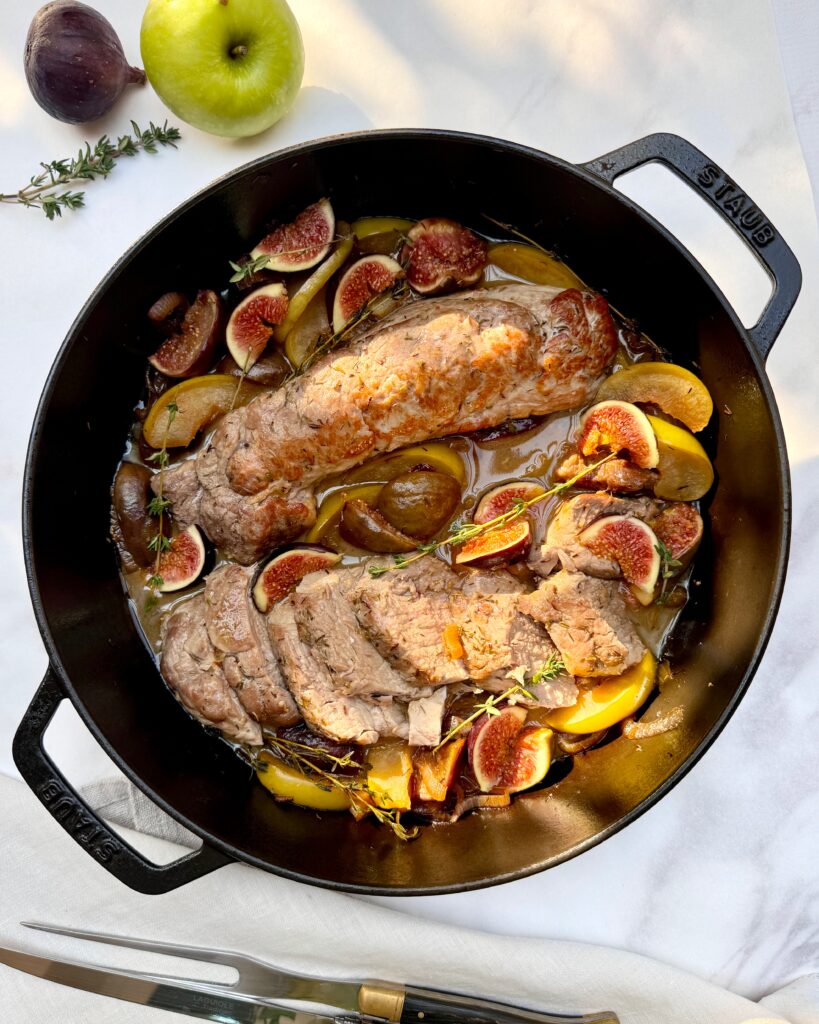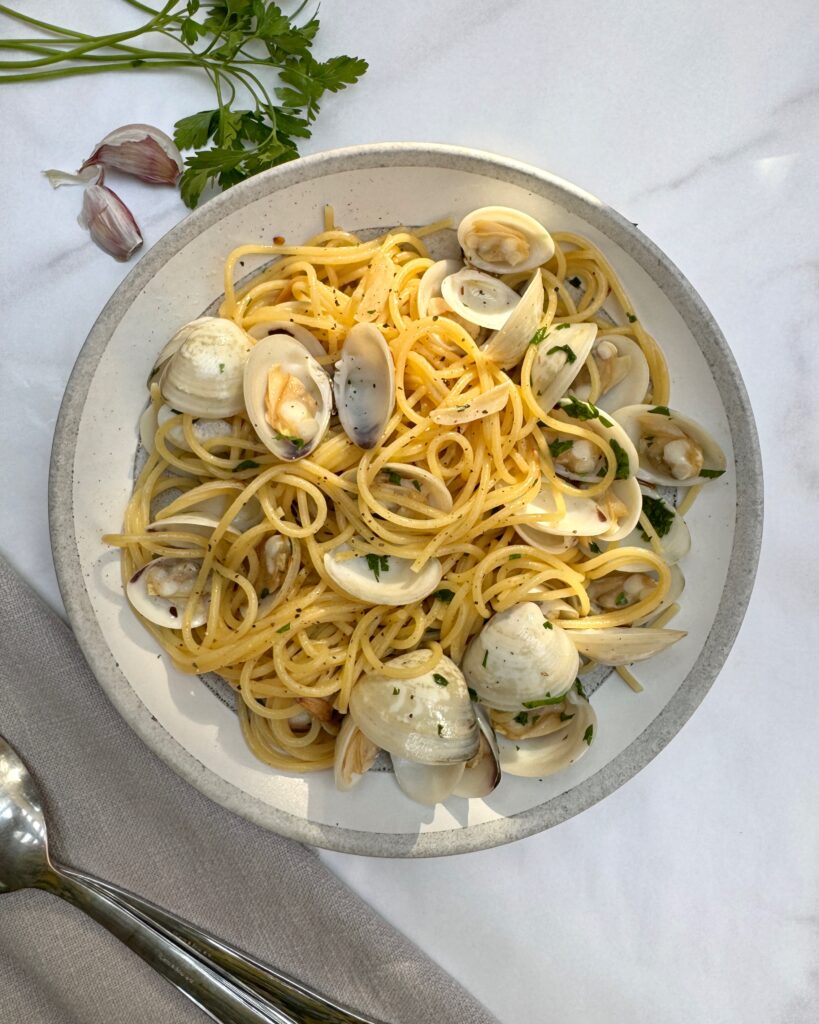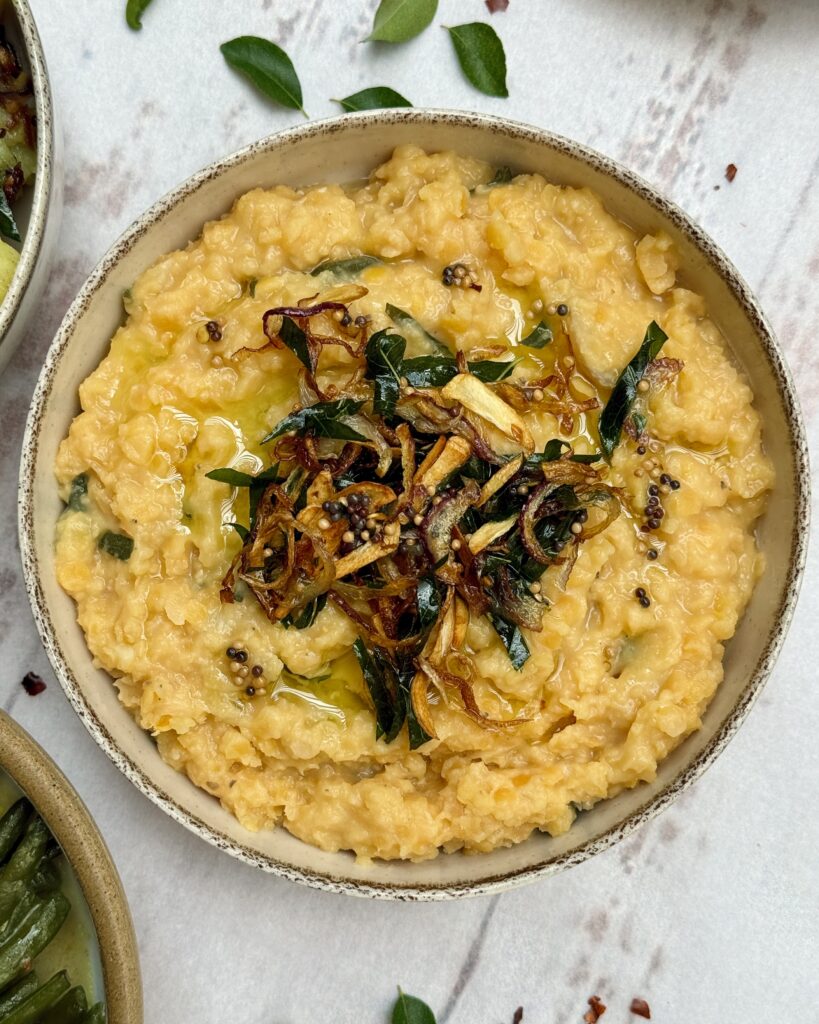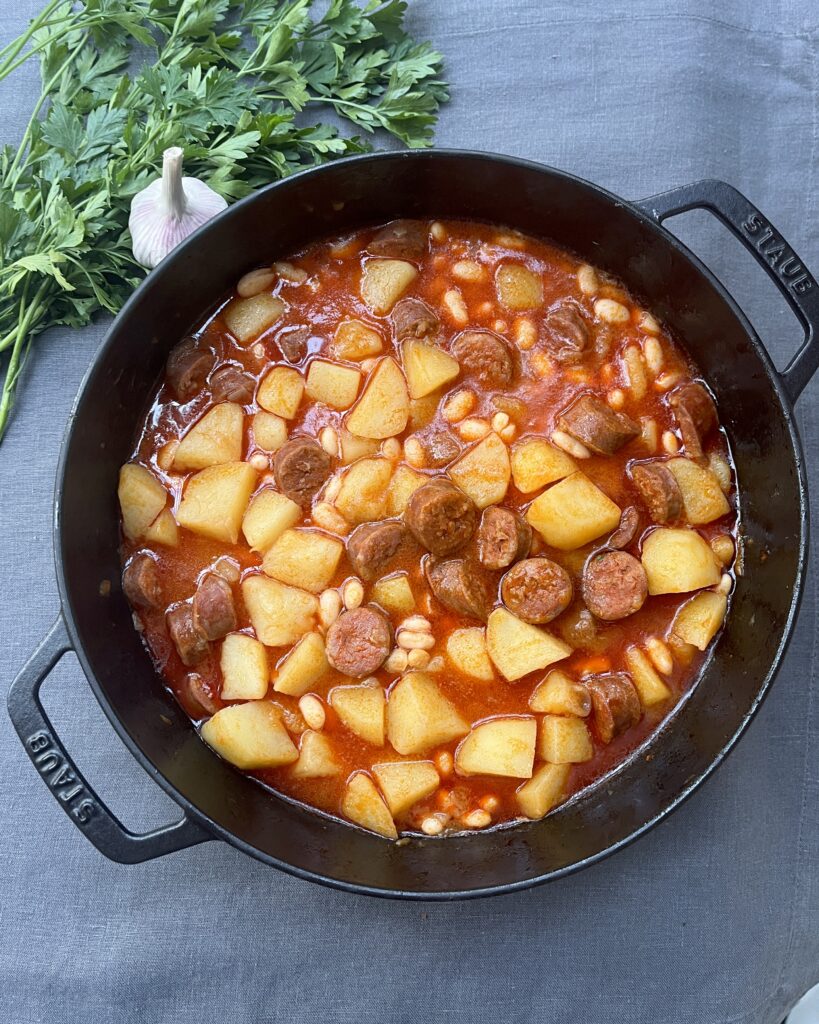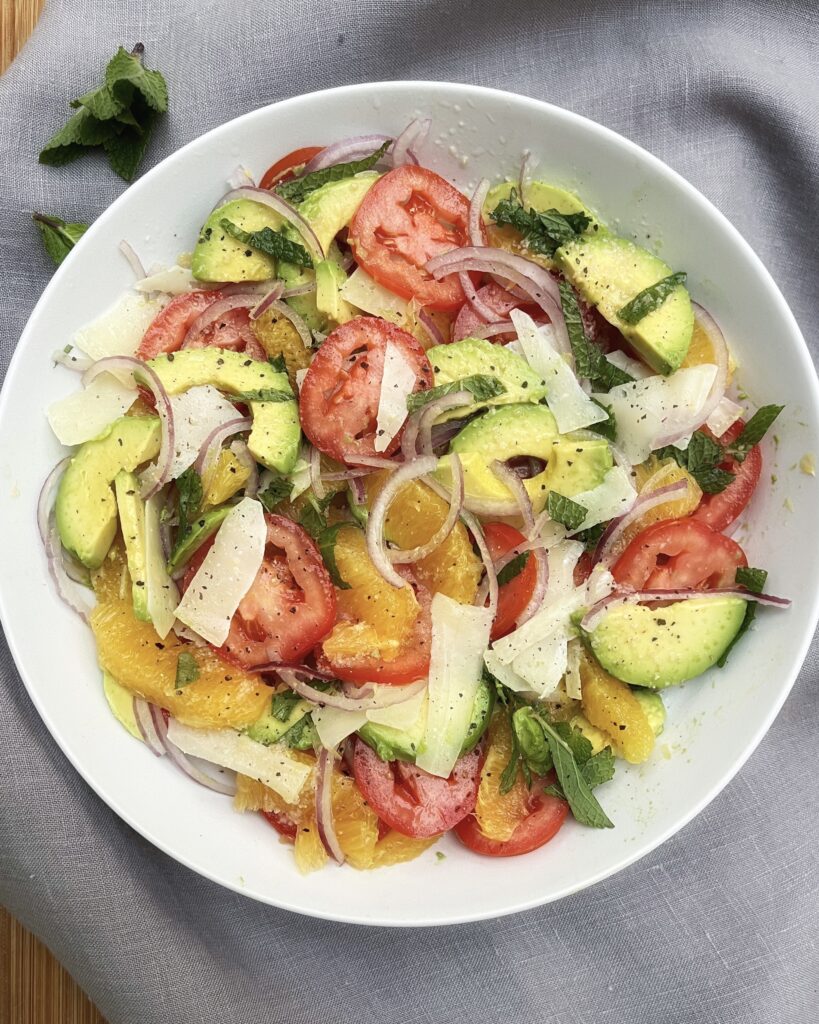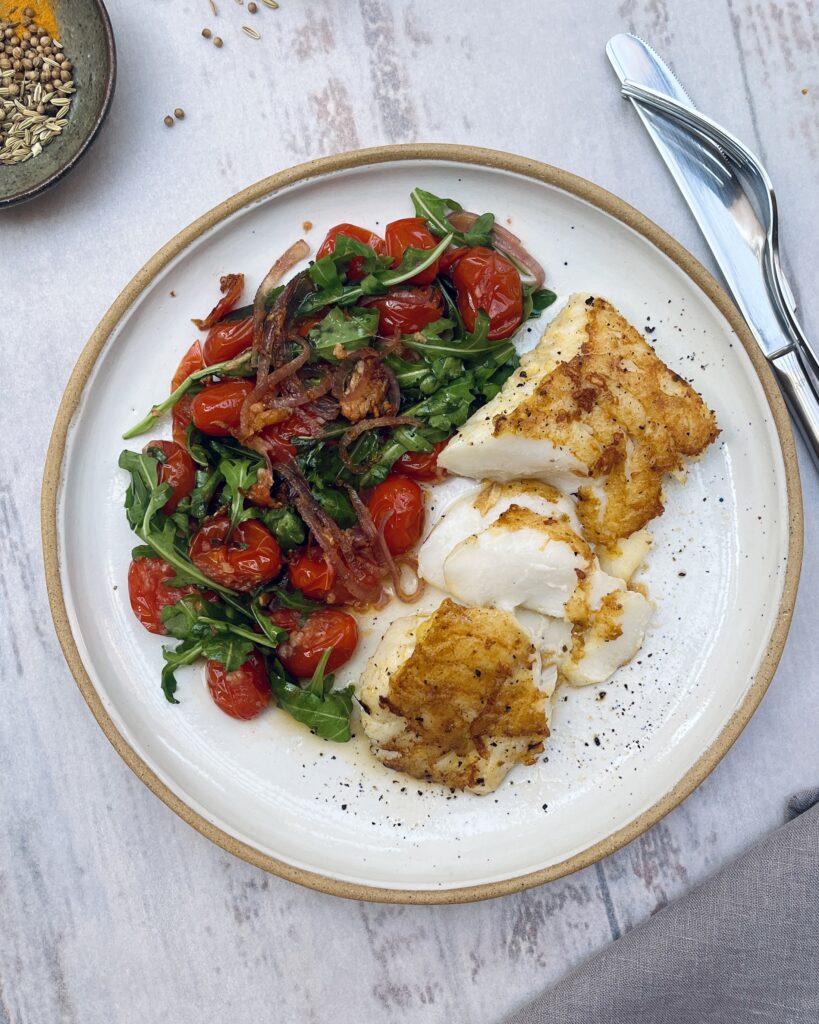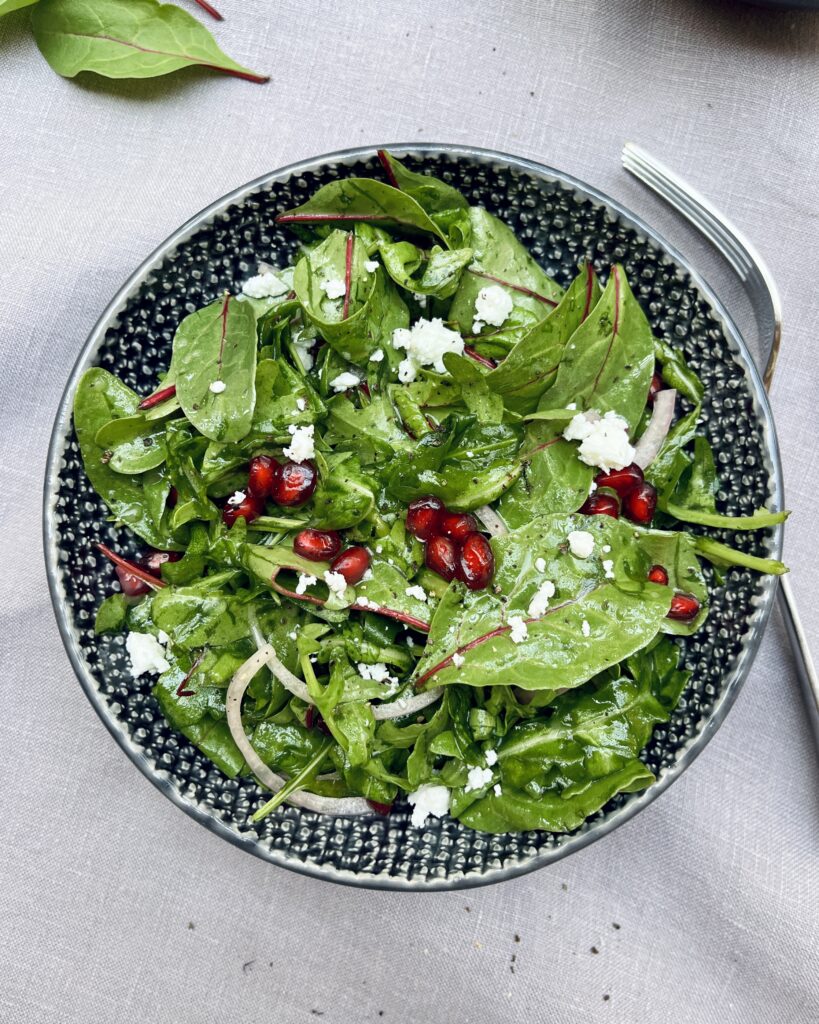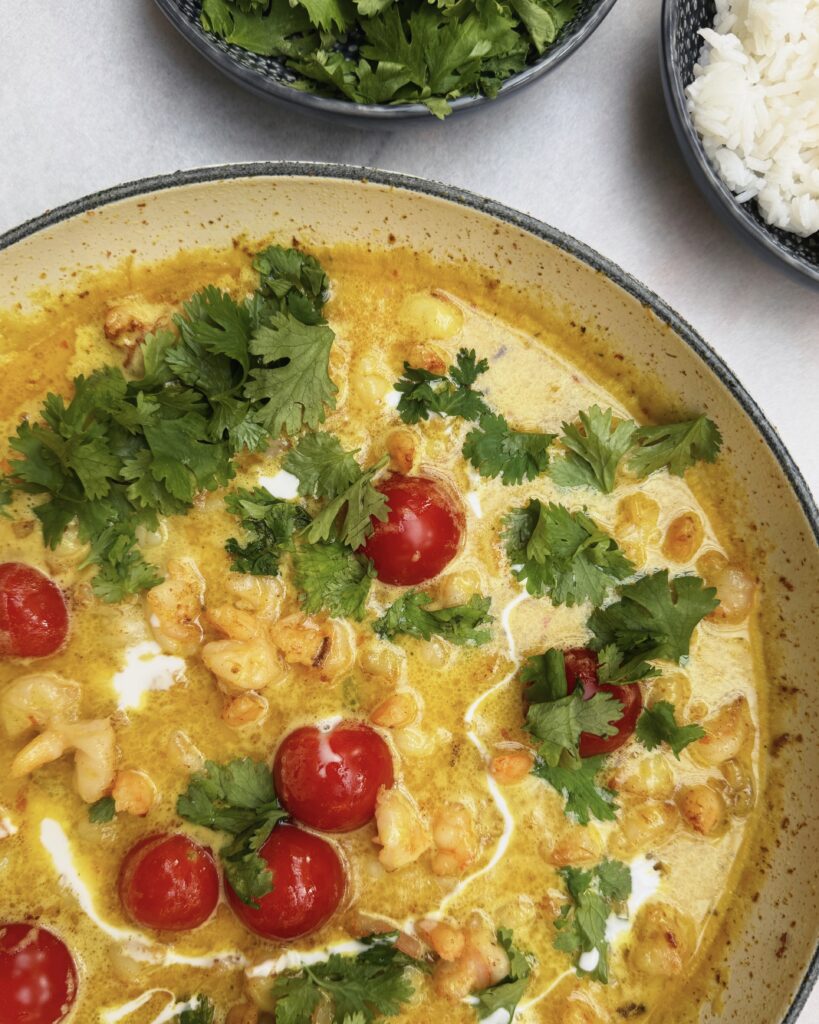
Thai curries are probably one of the most famous dishes of Thai cuisine abroad, and deservedly so. Rich sauces packed with aromatics and spices are full of delicious flavours – exotic yet still very agreeable with the Western palate. Yellow coconut curry is probably the most popular one being on the milder side. It is made with coconut milk or cream and adjustable quantities of Yellow Curry Paste.
What Is Yellow Curry Paste?
Oh, nothing special… just the best thing you can have in your fridge 😀 It is a condiment made with fresh herbs and aromatics, a selection of ground spices and shrimp paste. You blitz the ingredients in a stick blender, pack into an airtight container and store in the refrigerator. To make a curry, saute 1-2 tbsp of the yellow paste in oil, add coconut milk or cream, a couple of extra flavourings and cook protein or vegetables in the sauce.
And that’s it! Yellow coconut paste will take care of your dinner in a matter of minutes, which is a real savior on a busy day. So while it does include quite a number of ingredients, it is totally worth it. Most of them are easily available in any supermarket, others may require a trip to a specialty store depending on where you live. In Dubai, you can get everything from Choitrams, Spinneys or Waitrose. And once you’ve got them, 90% of the job is done. You barely even need to do any chopping – the blender will do it for you!

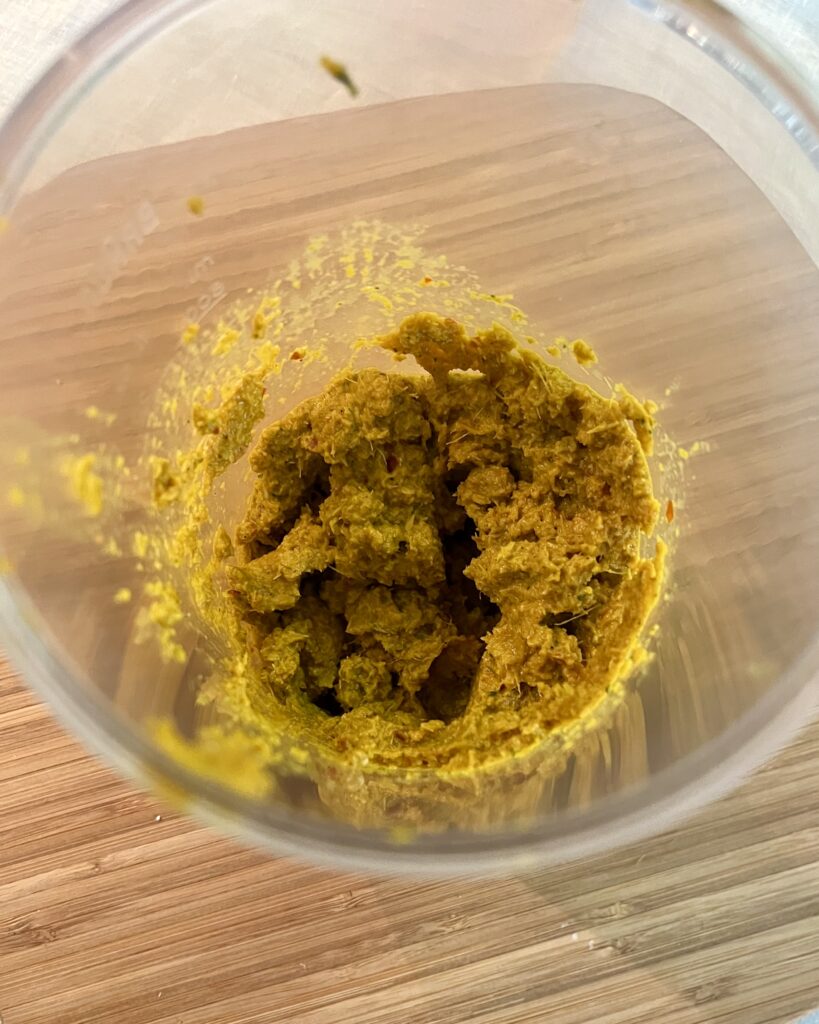
I am yet to come across a store version that can compare to the one made at home. There always seems to be a bit too much of of either heat or acid (because they use preserving agents). While when you prepare yellow curry paste yourself, you can regulate the quantities of ingredients that go in.
So What Does Go In?
For the authentic version you will need the following:
Fresh Aromatics: Ginger, Garlic, Galangal, Shallots, Red Chilies and Lemongrass
Ground Spices: Cumin, Coriander and Turmeric Powder
Other: Shrimp Paste and Salt
The recipe card below includes instructions on how to make the paste. For a detailed overview of the ingredients, please check my Yellow Curry Paste recipe.
Preparation Tips for Yellow Coconut Curry with Prawns and Cherry Tomatoes:
- Start by sauteing 1-2 tbsp of paste in 1-2 tbsp of vegetable or coconut oil. Because the paste is fresh, it will start to splatter once in contact with hot oil. Use an oil splatter shield to protect yourself and the surfaces around.
- You can make the curry with either coconut milk or cream. I prefer cream – it produces a thicker consistency and a richer coconut-y flavour. Pour it into the pan and stir well to incorporate the paste.
- Taste a little and adjust to your preferences; for more heat, add another teaspoon of paste or a whole chili. For sweetness, add a packet of brown sugar (5g). For a more pronounced taste of umami, season with a little fish sauce.
- In this recipe, I prefer to use raw shrimps and cook them separately. Raw shrimps contain water that they release during cooking, and that thins the sauce. Fry them in a little oil sprinkled with garlic powder instead until almost done and add to the sauce for the last couple of minutes.
- I really like cherry tomatoes here. They pop as you bite, providing a burst of sweet, juicy freshness.
- Cilantro brings in a bright, invigorating aroma that balances the spiciness of the curry. Sprinkle a handful of fresh leaves just before serving.
Serve your delicious Thai Yellow Coconut Curry over white rice and enjoy!

Thai Yellow Coconut Curry with Shrimps and Cherry Tomatoes
Equipment
- 1 large pan
- 1 medium non-stick skillet
Ingredients
For the curry:
- 500 g cleaned raw prawns fresh or defrosted
- 1 tbsp yellow curry paste see notes
- 2 tbsp vegetable or coconut oil divided
- 1 tsp fish sauce
- 1 tsp brown sugar
- 10-12 sweet cherry tomatoes
- Fresh coriander leaves for garnish
For the yellow curry paste:
- 3- inch piece of ginger
- 1 galic bulb
- 3- inch piece of galangal peeled and sliced
- 2 stalks of lemongrass or 1 tbsp minced
- 5 red chilies see notes
- 2 shallots
- 1 tbsp fresh coriander leaves plus 2-3 stalks
- 1 tbsp shrimp paste please don’t skip!
- 1 tsp ground turmeric
- 2 tsp ground cumin
- 2 tsp ground coriander
- 1 tsp salt
Instructions
For the curry:
- Heat 1 tbsp of oil in a pan to medium high and fry the prawns until they turn opaque. Remove from heat.
- Heat another tbsp of oil in a medium non-stick skillet.
- Add 1 tbsp yellow curry paste and saute until aromatic, stirring.
- Add 400ml of coconut milk or cream. Stir to incorporate the paste.
- Taste and adjust for sweetness and/or umami with brown sugar and/or fish sauce respectively.
- Bring to simmer and add the cherry tomatoes.
- Cook for 2 minutes and add prawns.
- Cook for another two minutes until the prawns are done.
- Serve over white rice garnished with fresh coriander leaves.
To make the paste:
- Soak the chilies in hot water for 10-15 minutes.
- Wrap garlic bulk and ginger root into foil and roast in the oven for 15 minutes (see notes). Let cool.
- Peel and slice the ginger and squeeze out garlic cloves.
- If using fresh lemongrass, remove the rough outer layer and extract the tender inner part from the white bulbous base.
- Place all the ingredients plus 1 tbsp of chili soaking water into a blender and blitz to a uniform paste.
Notes
- Start with sauteing 1 tbsp of yellow curry paste. Once coconut milk or cream is added, taste and add more paste if you’d like a deeper flavour.
- 5 chilies will give a mild kick. If you like it spicy, you can increase the quantities.
- Don’t skip the shrimp paste! It is an essential ingredient here that imparts deep umami flavours to the curry paste.
- When making the paste, you can either roast garlic and ginger or use them raw. Roasting brings out a more complex savory and sweet flavour.




